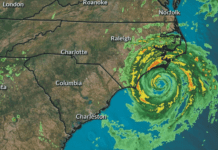I have read several articles about life-raft inspections, but no article has stated how long a raft should be inflated to check for leaks during inspection. Do you have any idea?
One raft maker explained that it depends on the raft model; an inspection facility stated that one to two hours was enough; and another repacking service said 24 hours is required.
This came to my attention when we had our decades-old life raft inspected at a service center in Fiji, where it was inflated for their standard 24 hours (in an environmentally controlled area). This was in great contrast to the inspection facilities I visited in Malaysia. Those facilities, licensed by the government to repack commercial life rafts, were nothing more than industrial garages with overhead doors open to the humid outdoors, where they left rafts inflated for one to two hours before repacking. (They did say that they would respect my request to leave a raft inflated for 24 hours, if I had it serviced there).
What is common practice?
Patrick Childress
Brick House, Valiant 40
Malaysia
As you noted, the time period for leaving a life raft inflated for pressure testing during an inspection will vary, depending on the policy of the facility doing the inspection, the raft manufacturers requirements for the specific age and type of raft, and the standard set by the agency or organization that has certified the servicing center (if its certified). Both the International Maritime Organization (IMO) and the U.S. Coast Guard (USCG) have established guidelines for inflation times and other raft-servicing procedures, but the tests required by each raft maker usually exceed the guidelines set by the IMO and USCG.
The IMO, in resolution A761 paragraph 5.5, states that the life raft should be subjected to a pressure holding test over a period of not less than one hour. Viking Life-saving Equipment marketing manager Elizabeth Pockel explained to PS that while the one-hour inflation timeframe is an IMO minimum, the physical inspection of an inflated raft often takes about two to three hours, depending on which tests are required based on the age of the life raft.
According to USCG Life-raft Servicing Program Manager Stephanie Groleau, Coast Guard/SOLAS-approved life rafts are required to be fully inflated for pressure testing for at least 30 minutes (once each year with air and with CO2 every five years); the pressure should not decrease by more than 5 percent. If the raft has an inflatable floor, it must be inflated for one hour. You can find the details of the required servicing procedures for USCG-approved rafts in the Code of Federal Regulations resolution 46 CFR 160.151-35,36,57, & 61 (www.navcen.uscg.gov). The resolution also spells out the requirements for conditions at a USCG-approved facility in 46 CFR 160.151-43, which include maintaining an even temperature and low humidity where life rafts are pressure tested.
The USCG and IMO guidelines are minimums that certified service centers must abide by; however, most raft-inspection companies also carry certification from their affiliated raft makers, and the raft manufacturers test procedures are more specific and more discerning.
The life-raft manufacturer servicing manual procedures go above and beyond what is in (USCG) regulation, Groleau said. If the manual states a longer inflation time for pressure testing, then the approved service technician will do so. It is unwise to request procedures that violate the service and instruction manuals for your life raft, even if your raft is not a USCG-approved piece of equipment.
Recreational life rafts are not USCG or IMO regulated, nor are recreational raft inspection stations, and only a fraction of recreational sailors own USCG/SOLAS approved rafts. Regardless, its always a good idea to use a repacking facility that is approved by your raft maker and is USCG/SOLAS-certified; lobby hard to watch the process yourself. The USCG offers an online, worldwide database of approved raft service centers at http://cgmix.uscg.mil/LifeRaftSearch/LiferaftSearch.aspx.





































